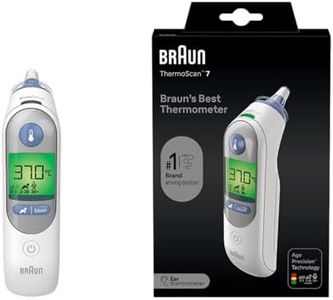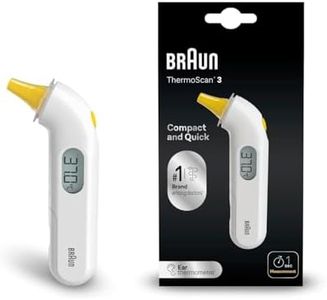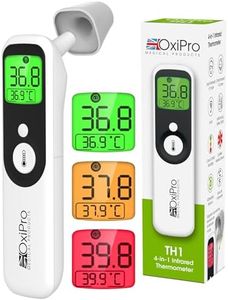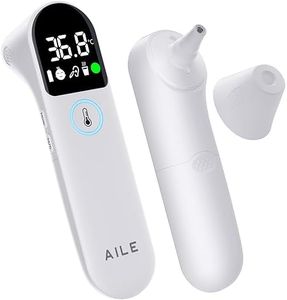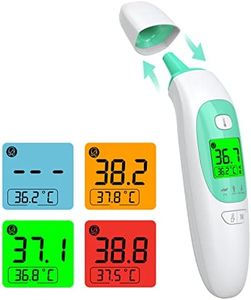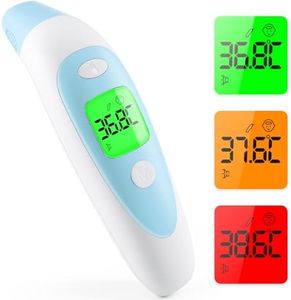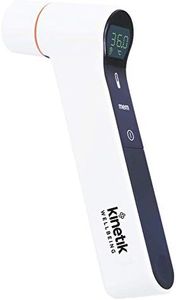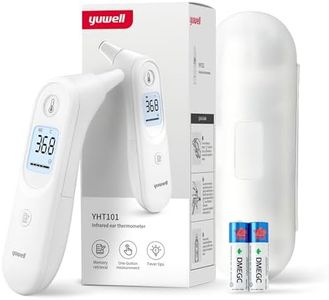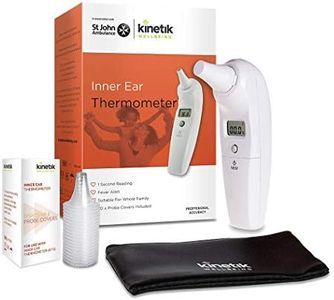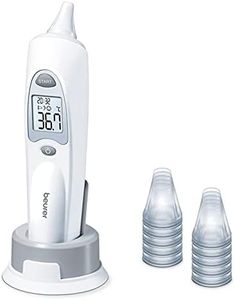We Use CookiesWe use cookies to enhance the security, performance,
functionality and for analytical and promotional activities. By continuing to browse this site you
are agreeing to our privacy policy
10 Best Ear Thermometers
From leading brands and best sellers available on the web.Buying Guide for the Best Ear Thermometers
Choosing the right ear thermometer is crucial for accurate and convenient temperature readings, especially for families with children. Ear thermometers, also known as tympanic thermometers, measure the infrared heat emitted from the ear canal. They are popular due to their quick and non-invasive nature. When selecting an ear thermometer, consider the key specifications that will ensure it meets your needs effectively.AccuracyAccuracy is the most critical aspect of any thermometer, as it determines how closely the thermometer's reading matches the actual body temperature. Ear thermometers are generally accurate, but their precision can be affected by factors like earwax or improper placement. Look for models that have been clinically tested and validated for accuracy. If you need precise readings for medical reasons, prioritize accuracy over other features.
Response TimeResponse time refers to how quickly the thermometer can provide a reading. Ear thermometers are known for their fast response times, often delivering results in just a few seconds. This is particularly important when taking the temperature of young children or infants who may not sit still for long. If you need to take quick readings, opt for a thermometer with a short response time.
Ease of UseEase of use encompasses how simple the thermometer is to operate, including how easy it is to position in the ear and read the results. Some models come with features like pre-warmed tips or guidance systems to help with proper placement. If you're new to using ear thermometers or will be using it frequently, choose a model that is user-friendly and has clear instructions.
Memory FunctionThe memory function allows the thermometer to store previous temperature readings. This feature is useful for tracking temperature changes over time, which can be important for monitoring illnesses. Some thermometers can store multiple readings, which is beneficial for families. If you need to keep track of temperature trends, look for a model with a robust memory function.
DisplayThe display is where the temperature reading is shown. A clear, easy-to-read display is essential, especially in low-light conditions or for those with vision impairments. Some thermometers offer backlit displays or large digits for better visibility. If you often take readings at night or have difficulty reading small text, consider a thermometer with a high-quality display.
Hygiene FeaturesHygiene features include aspects like disposable probe covers or easy-to-clean designs. These are important for preventing the spread of germs, especially in households with multiple users. If hygiene is a top concern, look for thermometers that offer disposable covers or are designed for easy cleaning.
